It's been a while......
Yes, I know, I know, I disappeared off Blogland 9 years ago with no explanation, no apology, no excuses just BAM, gone. All that remained was a Christmas wish for you all and, below that, a eulogy to my beloved dad. It took me a while to work through my grief as well as having to deal with all the official stuff that follows any death, then the clearing of all dad's things, the emptying and sale of our family house, etc etc etc so I suppose I lost my mojo for blogging ...although I'm still not quite sure if I ever had a mojo to loose!
Anyway, I'm back now and you might need to make a cup of tea before you start reading this as it's ended up being a long story!
I'm sorry for my vanishing act, it wasn't personal, just something I had to do to give myself some headspace. It was then quite easy to get out of the habit of writing a post...and the longer it went on, the harder it became to think about doing one as it slid further and further down my 'to do' list.
Life carried on. We both finished work, first Himself then me a couple of years later - I still can't bring myself to say 'retired' as I don't feel old enough to be retired regardless of what the mirror tells me! :-) We did lots of travelling to places I, Himself or both of us had long wanted to visit. In 2016 I achieved my childhood dream of going to Bhutan where we spent 3 glorious weeks travelling around in stunning countryside, visiting amazing places including some marvellous ancient temples, learning the history of the country and of Buddhism, eating delicious food, and doing an incredibly beautiful but tough high-altitude 6 day trek. We even saw the first of the black necked cranes migrating into the Phobjikha valley from China for the winter. Our final visit was to The Tiger's Nest Monastery - which was the place which had sparked my desire to visit from seeing a film about it when I was about 8 years old.
Have rucksacks, will travel! We flew from Manchester to Kathmandu via a short stopover at Abu Dhabi, possibly the world's most soulless airport!. Then one night in Kathmandu before flying to Paro, Bhutan's only international airport.
The flight path from Kathmandu to Paro airport is parallel to the Himalayas and the crew very kindly put the tourists on the left side of the plane to get the best views of the Everest range.The flight is only about 20 minutes long but we still got a box with a sandwich, a soft drink and some sort of chocolate muffin-type thing which we ate whilst staring out of the window at the amazing views. We knew we were close to landing when the plane started to zigzag between the mountains to get to the very short runway in the Paro valley. The runway is only 2265m long - roughly the same length as the height of the airport above sea level and, because of the mountains, there are not the usual high tech guidance gizmos to assist the pilots. They have to rely on spotting landmarks and get a mere 30 seconds from the last turn to the plane touching down - which is why there are only around 20 pilots licensed to fly into Paro! This is the view I saw just before the plane did what felt like a handbrake turn to the left to go down onto the runway! No wonder it's classed as one of the world's most dangerous airports...and why everyone including us clapped as we landed!
Thimpu, the capital, is a tiny but fascinating town. There are temples aplenty which are used as meeting places as well as for worship, but it's all very relaxed. Buddhism is totally integrated into everything the Bhutanese people do, it's part of who they are. It feels a very calm, friendly and safe country. Nobody rushes, but everything happens very smoothly.
Most people speak very good or excellent English - it's their second language and most higher education here is taught in English and most of the books are in English.
You are not allowed to take photos inside anywhere where you have to take your shoes and hats off so basically all the temples are camera free, but that really allows you to soak up the incredible carvings, wall hangings, ceiling hangings, very busy altars full of flowers and offerings and numerous statues of the gods and the bodhavistas (female compassionate beings)as well as the smell of the incense and the very feel of the ancient building that have seen many thousands of people pray in there over the hundreds of years lifespan of the temples, rather than just looking for the best photo shot.
On our first full day in Bhutan we visited the Memorial Chorten in Thimpu - a huge stupa built in memory of the third king. Ten monks were inside on the first floor chanting, drumming and blowing something akin to an alpine horn. The sound echoed all the way up the three floors to the top and was quite soothing and hypnotic.
Our guide, Tensin, was very impressed with us as he usually allows around 1&1/2 hours to get up to the temple but we did it in about 45-50 minutes without much effort and without rushing... we must be quite fit from all the walking we do in the Derbyshire hills plus the fact that we have spent considerable time at altitude in the past! He only told us afterwards that he uses this hike to gauge people's fitness and, apparently, we passed with flying colours!
All tourists groups in Bhutan (including groups of two!) have to have a designated guide and driver. Our guide was Tensin and our driver was Dragbaar. It was the first time we've ever done a trip a guided trip as we usually book and travel independently, driving ourselves, so it was an interesting experience that took a little while to get used to! More on the roads later but suffice to say we were very glad we had a driver.
This prayer wheel was about halfway up the mountain, a nice shady place for a quick rest and a turn of the prayer wheel.
Tourists can't just rock up at the border and expect to be allowed into Bhutan as the government very much want to keep their culture intact. Bhutan has very close links with Thailand, so they have seen the effects that open border tourism and backpackers have had on that country and do not want that to happen in Bhutan. So everything has to be organised in advance through a reputable travel company, we used Trailfinders who, in this case, linked to an Indian company who are permitted to organise holidays in Bhutan. Everything had to be paid for well in advance. The money was paid into the Bank of Bhutan and our details were given to the government. The Indian company applied for our visas two months before our arrival date. The government then double checked that the money was in the bank and that our details on the visa forms matched with our details that they already have before issuing our visas. Everything was booked for us - we were told which hotels we'd be staying in, which restaurants we'd eat in and so on - which certainly took away the hassle of choosing! All the hotels, meals, trekking, trips etc are done on credit and sorted out by the guides. Once we'd returned home the local company submitted all the bills to the government who added up the bills, paid them, deducted the taxes then paid the travel company back. It sounds a bit long-winded but it ensures that no-one can claim for fake clients and non-existent trips.
The other joy of Bhutan is that they have refused all international franchises, so there are no MacDonalds, Starbucks, Costas, Burger Kings, Pizza Huts or anything.....just two local coffee shops in Thimpu and Paro and lots of wonderful Bhutanese restaurants serving amazing, delicious local food.
Just one of the stunning views of the valley below the Khamsum Yuley Lakhang Temple near Thimpu.
The view from the Dochula Pass.
We visited Punakha Dzong. There are many Dzongs around the country. They are effectively both the local government offices and a monastery, split into an Administrative half and a Religious half so that they can look after both the secular and religious needs of the local populations. You have to remove your hat and wear long sleeves to enter a Dzong - if you don't comply, you don't go in. Simple.
I don't know if it's the same in all of the numerous Dzongs throughout Bhutan but, once a year for 3 days, all the Warrior Clans around Punakha send representatives to the Dzong (all males!) and they can say/do/ behave as they like and no-one can stop them. On the third day, the Governor of the Dzong has to walk across the courtyard through 2 rows of warriors who can say whatever they like to him - abuse if he's not done things, comments on what he has done, suggestions on what he needs to do....then there's a big party and the following day it all goes back to normal but, hopefully the Governor has taken notice of what's been said to him!
This Dzong, like all the Dzongs we visited, was a very impressive old building with wonderful wooden carvings everywhere. The shapes of the Dzongs vary depending on the local landscape, but they all have the administration and religion halves of the buildings. Punakha Dzong is on flat land at the confluence of two rivers, is quite large, square and stands out in the valley, whereas Trongsa Dzong, like its town, which we visited the next day, was a linear building as it followed the contours of the mountain top.
When I say 'main' road I don't mean 'main' in the way that we mean main. I should say 'only'. I should also explain that, when we were there in 2016, they were widening the road - ALL of it, in one go!The busiest stretch of road from Paro (the airport and the Tiger's Nest Monasery) to Thimpu (the capital) and Punakha is tarmacked and quite good because it is the most touristy bit then it's dirt road to just short of the Dochula Pass, which is tarmacked because of the visitor numbers there, then it's back to dirt road again - mostly with an unprotected several thousand foot terminal plummet down one side and a dodgy looking unstable cliff face on the other. In 2016 the road was about 1&1/2 vehicles wide - including buses and lorries! There are no railways in Bhutan because of the terrain, so all traffic uses the Lateral Road.
From Paro to Bumthang (yes, I laughed too ...a lot!) our furthest destination eastwards, was 190 miles/ 306 kms. By air it's a mere 79 miles, which gives you some idea of the twists and turns of the road. The road was being widen (I really hope they've finished it by now!) partly because of the increased tourist traffic but mainly because of the hydroelectric dams that are being built to supply Bhutan and India with hydroelectric power. Building supplies for the dam etc are coming in from India and the trucks are too big and heavy for the old road. The bridges are also being widened to replace the narrow metal Bailey Bridges still in place from World War Two!
For reasons best known to the Bhutanese government, they decided to do the entire road all at the same time, with the work being tendered for in 1km chunks by different companies - we saw Indian, Japanese and (possibly) Korean companies working on different stretches. We could drive for hours along what Ten and Dragbaar rightly called 'The Dancing Road' on rough, potholed and uneven dirt road, then have a kilometer or two of tarmac then be back to bouncing about dirt on a bit being done by a different contractor. Bonkers!
In theory you could drive from Paro to Bumthang in one go in 8 hours. In practice, we could sometimes drive for 8 hours and do around 80 kms! We often had to stop and wait for a landslip to be cleared or a bit of cliff to be dynamited. We always got to our destination for the night, but it was often later than we'd hoped for. However, it was always an interesting but bouncy journey every day!
A classic stretch of road.....no barriers, endless drops, steep unstable cliff, potholes and ridges galore, dust,dust and more dust plus water and a bit of mud for added fun!
We had to wait about an hour here for the lorries to move off the road to let us through. The digger fills the back of the lorries, the lorries reverse scarily close to the edge of the road and the terminal plummet then tip the spoil down the mountainside.
The diggers got into some even more precarious positions than this one did!
That white scar is the road! It took about 4 hours to get from the white bit on the left hand side of the valley to the town we were staying at that night. Fortunately our hotel was built back from that drop - and can be seen back along the road where there's a green field below the road.
A typical lunchtime meal. There was always a chicken curry, kewa datse (potato with cheese), ema datse (chillies with cheese), then other dishes such as momos (like Chinese Dim Sum), a vegetable dish of some sort, plain rice and noodles - often with meat or vegetables in. There was also kha ja (butter tea) which is quite pleasant once you get used to the slight oiliness.
It's fair to say that the Bhutanese love chillies - I mean REALLY love chillies. Andy and I enjoy spicy food and have got a high chilli tolerance so we found the ema datse tasty but fairly mild, but it turned out that they tone it down for the tourists. Ten brought us a small bowl of their ema datse to try one day and he was quite surprised when we ate the lot. I have to confess that we didn't feel the need to eat another bowlful of theirs again once honour was satisfied though!!
Datse just means cheese and since our trip I've made both kewa datse and ema datse. I found that the nearest I could get to Bhutanese datse was to combine mozzarella and a vintage cheddar! We've also made momos on a fairly regular basis - I do love a momo or several!
Andy and I were the only people in this restaurant and the food was cooked fresh for us - Ten had phoned ahead to tell them our arrival time and it was brought out as soon as we sat down. It was delicious. I didn't get bored of Bhutanse food....well, maybe the daily chicken curry, a bit!
We drove for 9 hours, covering 145kms from Punakha, winding our way tortuously up and over the Pelela Pass (3,300m) at the top of the Black Mountain range that divides the country into east and west - like the Pennines in the UK, but waaaay higher, and down to Trongsa for our next overnight stop. The valleys on the east side of the mountains were wider U shaped valleys rather than the endlessly deep V shaped valleys on the west side. It all suddenly felt much more Alpine. The hotels and restaurants on the east side of the mountains have suffered from a big reduction in tourism because of the road works as most tourists don't want to drive the Dancing Road. I hope things have picked up again now because it is a beautiful area.
Obviously once we got to Trongsa we visited the Dzong, where we happened across a group of men in traditional dress chanting and practicing a dance for a forthcoming religious festival - turned out the chanting was them counting for the steps!
It was chilli harvesting time. So many buildings had chillies drying on the rooftops or hanging in strings around windows.
Loved (and obeyed) the sign on the temple door.
Jakar town and Dzong
Jakar Dzong
We had a long but very easy drive back out of the Bumthang Valley (which was still making me chuckle!) and retraced our route back along 'The Dancing Road' the next day. There was very little traffic and we only had a couple of very short stops for landslips - a much nicer experience than with all the heavy traffic on our way to Jakar.
Gangtey Goempa Temple in the Phobjikha Valley
On our way to our hotel as the sun was setting, we did a 4km walk along the Phobjukha Valley nature trail through pine forests, across dodgy bridges and along wobbly walkways over very marshy ground to reach the Black Necked Crane Information Centre. It was a really interesting place and we managed to see the first few migratory arrivals from China - the cranes fly into Phobjikha from China at about 30,000 ft - up there with the planes! They spend winter in the marshes, which don't freeze over...which allows them to hear approaching predators and escape.
The Phobjikha Valley Black Necked Crane Information Centre
Grumpy yaks made a change from landslips!
Finally back in Thimpu and we were given the best room in the hotel - it was huge and very, very comfortable!
We got to meet my Bhutanese friend Jigme whilst we were in Thimpu. We became Facebook friends via a local Buddhist friend at home and had chatted a lot. He was a teacher down in the south of Bhutan but had got permission to take a day off work the previous day and had spent 6 hours driving to Thimpujust to spend a day with us. It was so lovely to meet him - and we're still friends to this day. He is a genuinely nice, open, honest and caring man who, obviously, speaks excellent English!
The view of Thimpu's one and only flyover from the river bridge.




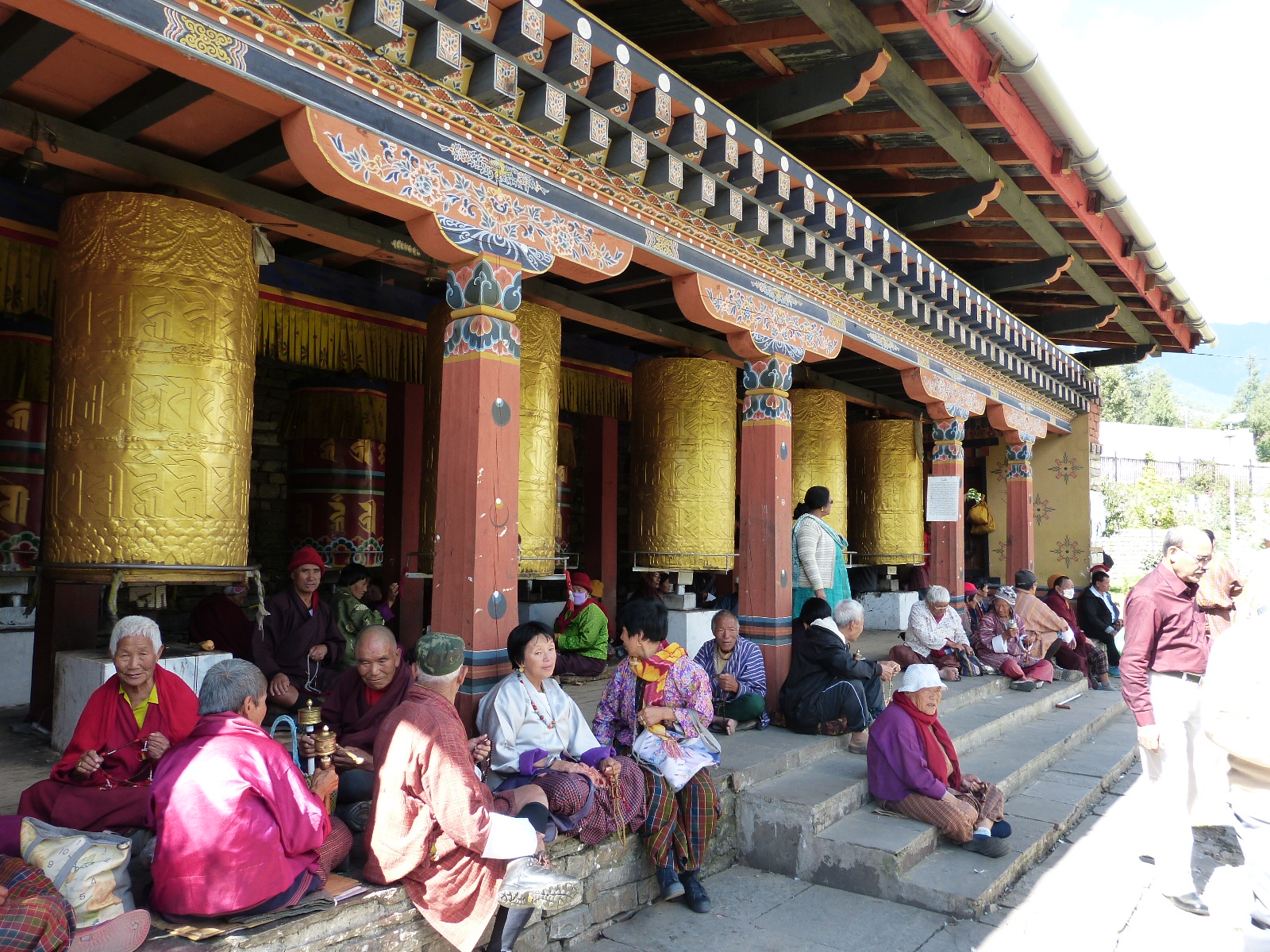











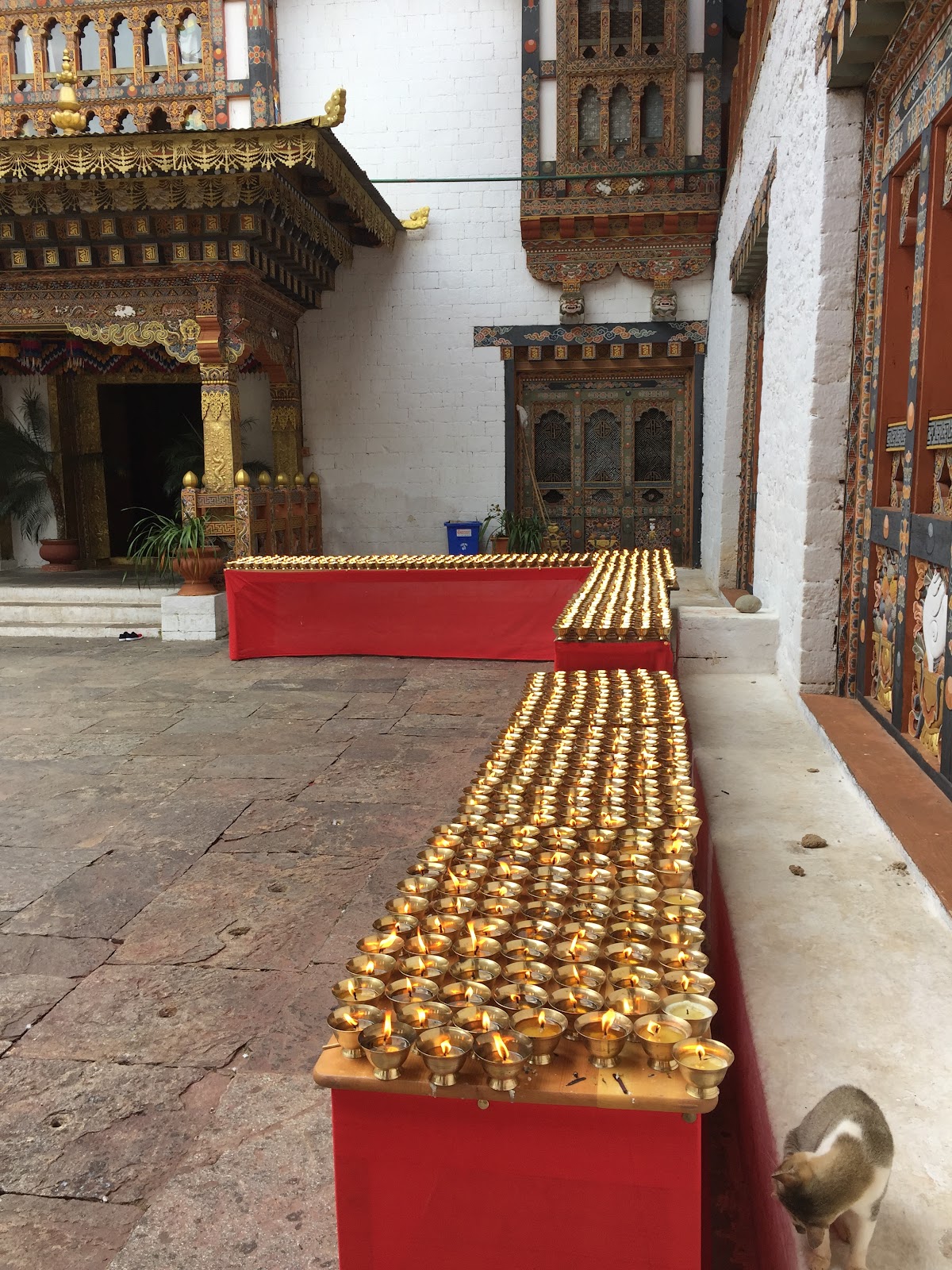

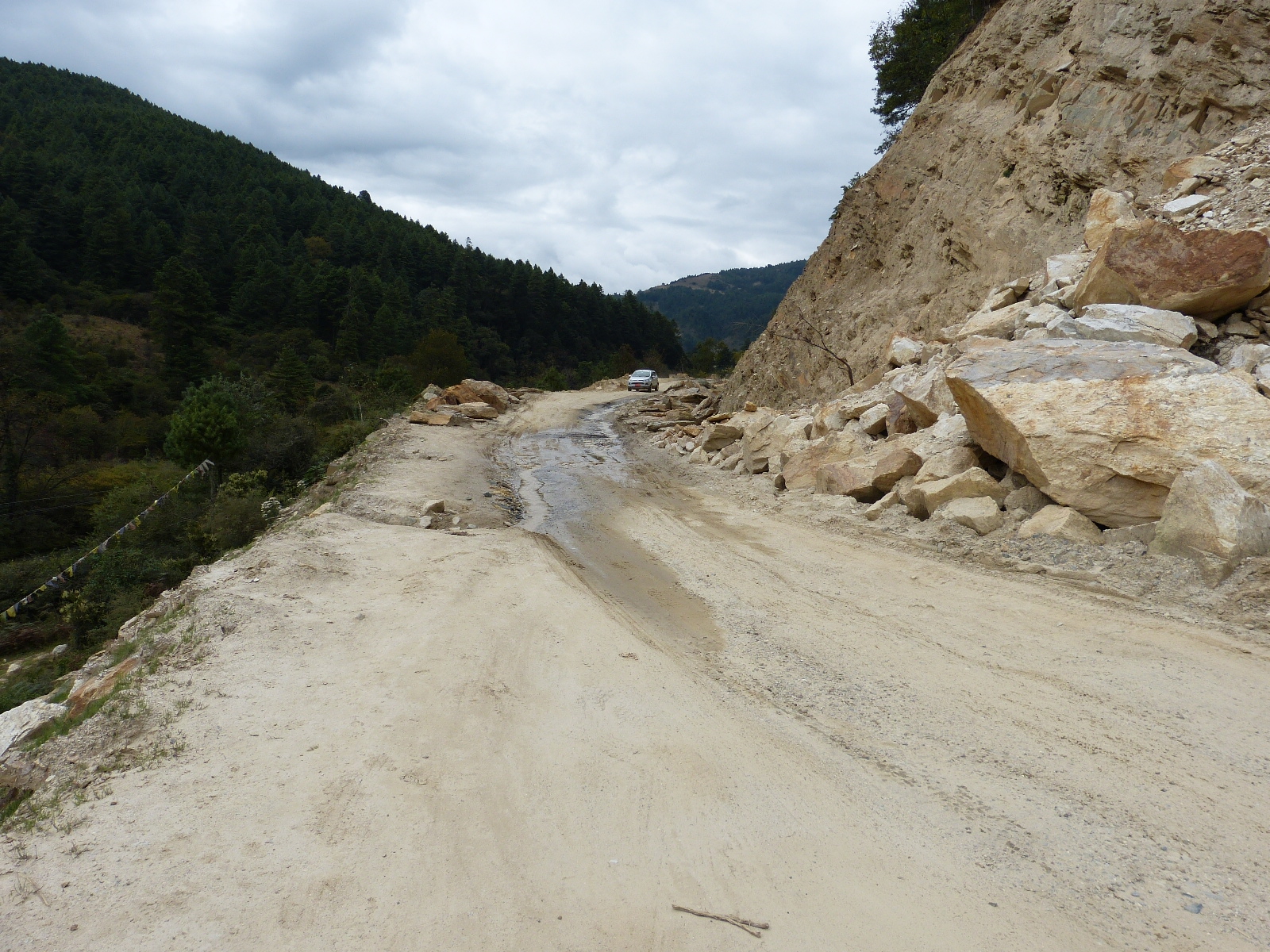












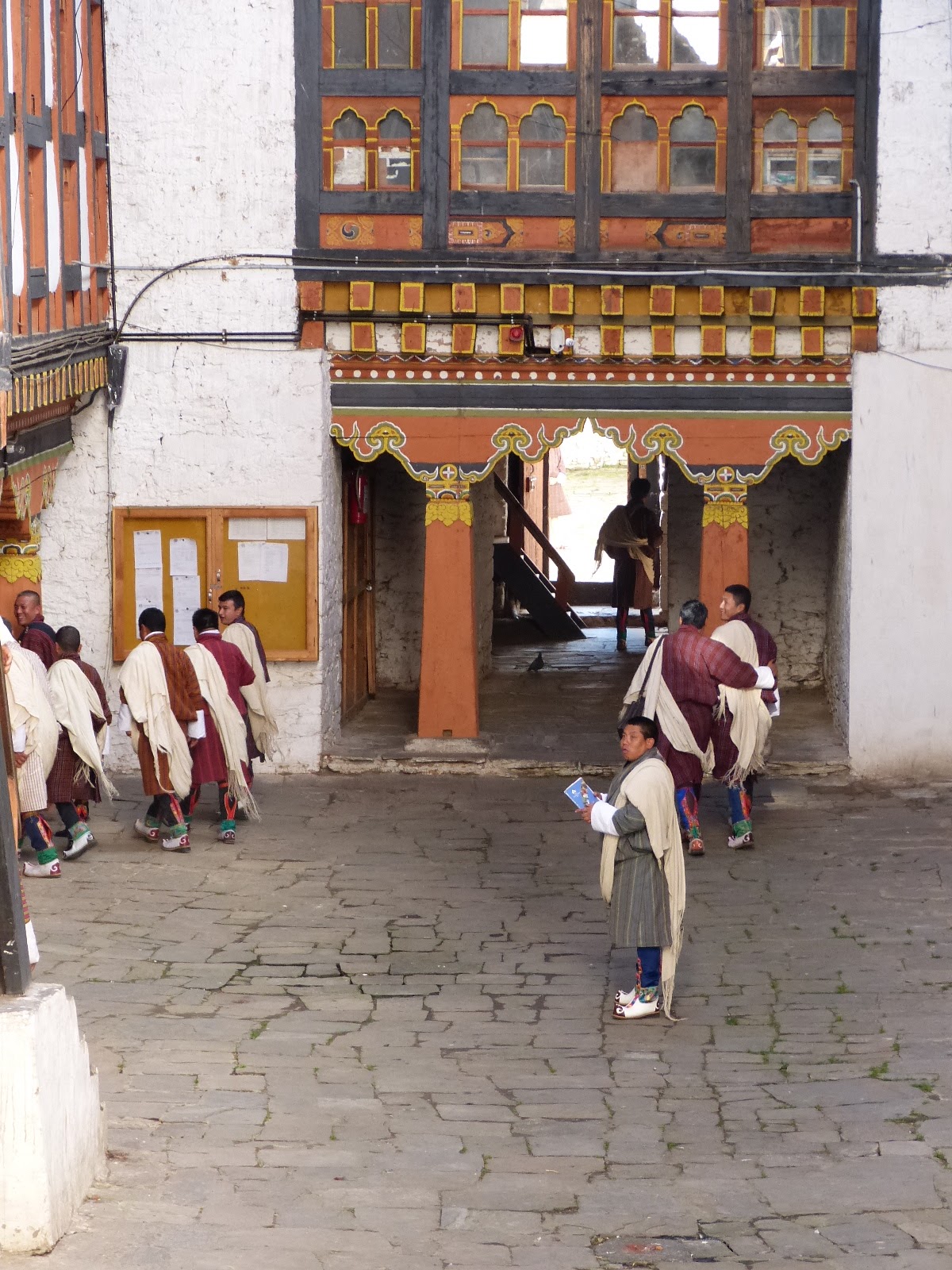






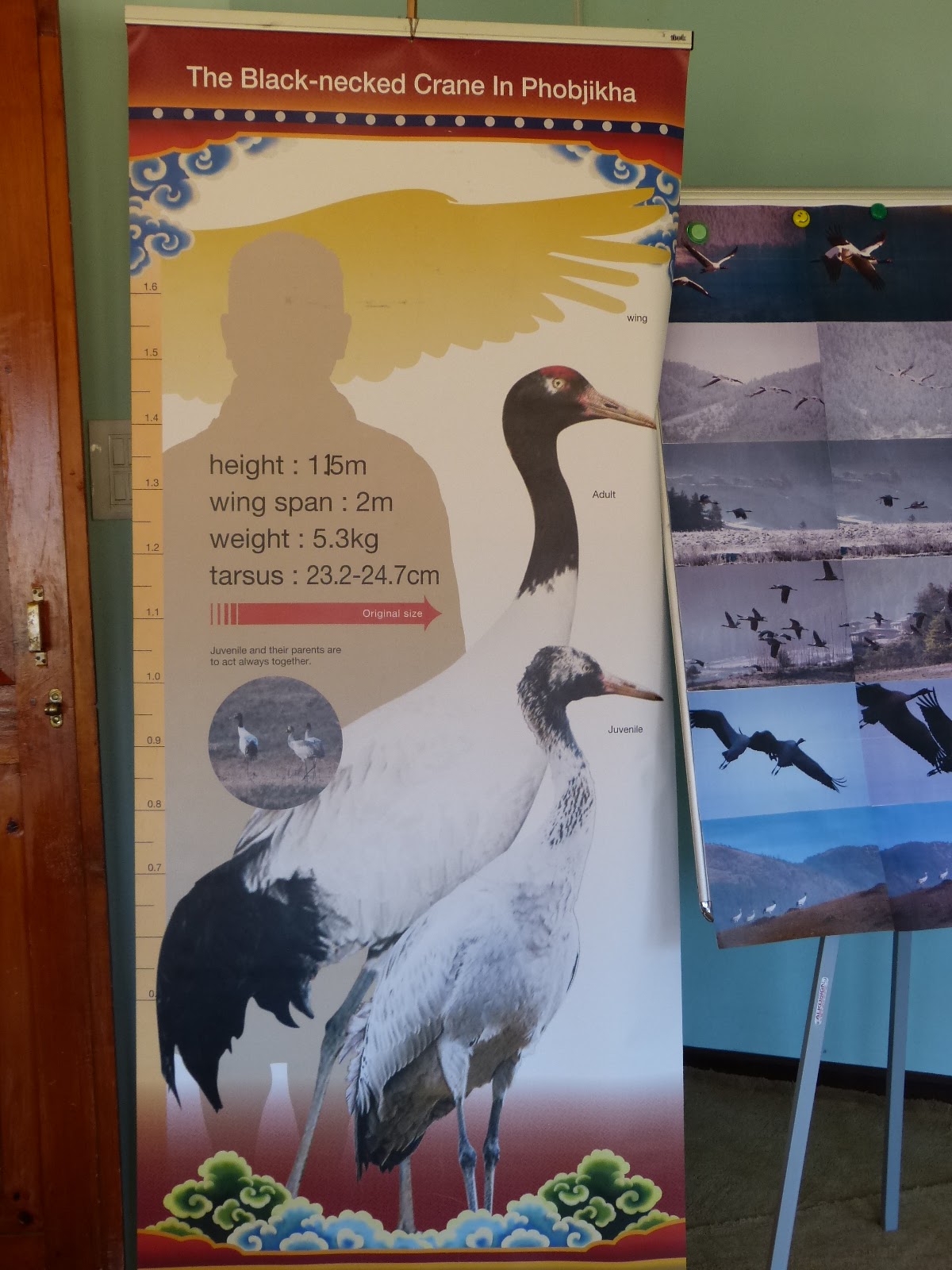








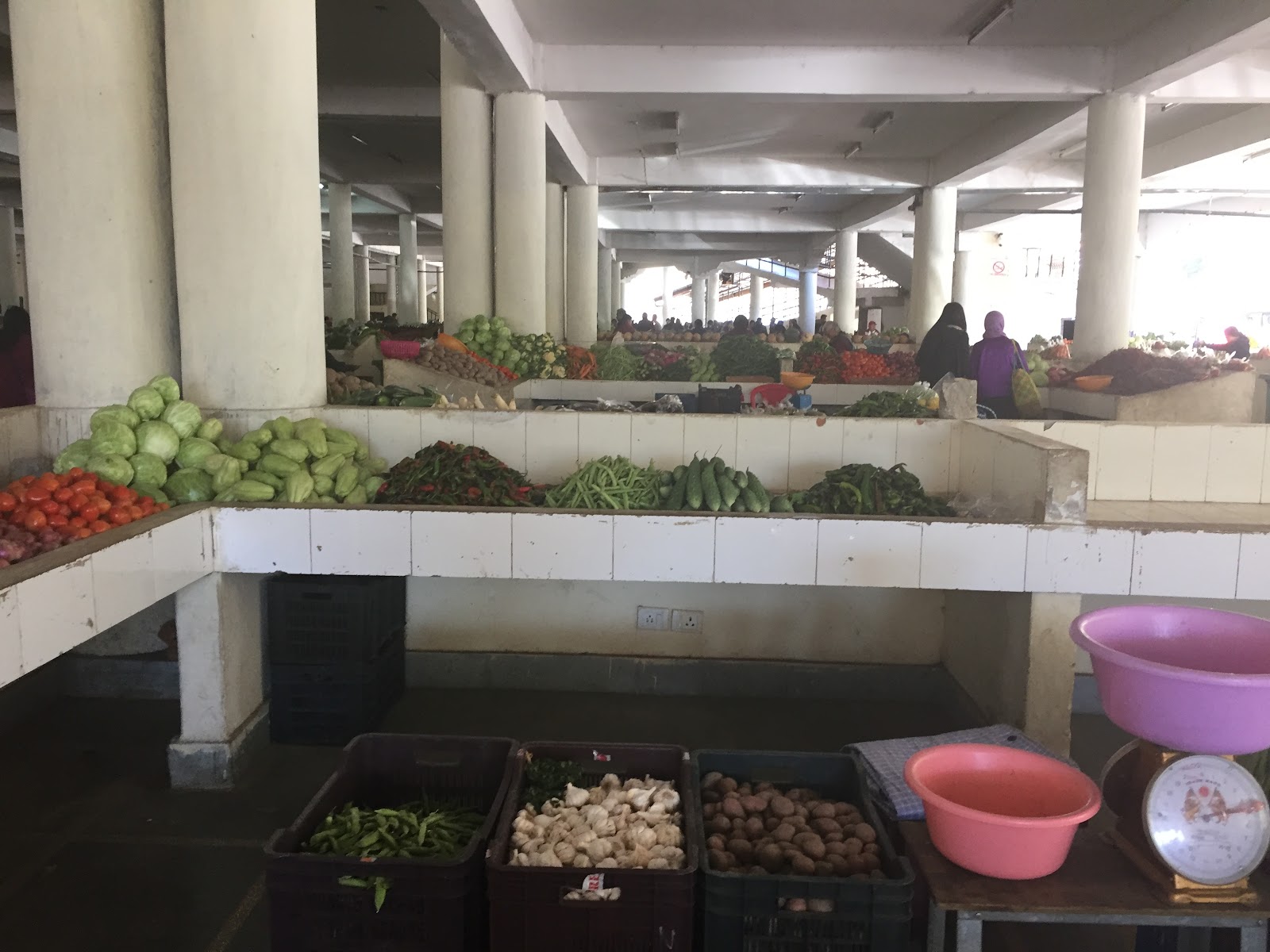

2 comments:
Oh, welcome back you lovely girl, xxx 💚💚
What a fabulous account of your trip - have only been able to give it a quick first read but will return tomorrow to slowly & properly absorb as much as I can. I imagine this is what Tibet might have been like to visit before China stimped in and tried to wreck the country?
Hello my lovely - it's so good to 'see' you again!
I'd almost forgotten how to write a blog post, so it's a good job I didn't leave it any longer! I definitely left a bit of my heart in Bhutan - as well as wondering about how Tibet is now - great mind think alike eh?!
There are lots more posts mulling around in my brain so you won't have to wait 9 years for the next one!
xxxx
Post a Comment